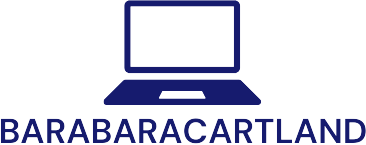Table of Contents
ToggleIn a world that’s more connected than ever, being a dual language learner isn’t just a skill; it’s a superpower. Imagine effortlessly switching between languages like a superhero changes costumes. For many, this journey begins in childhood, where the brain is a sponge, soaking up sounds, grammar, and cultural nuances. But it’s not all fun and games—there are challenges that can make even the most seasoned linguist scratch their head.
Understanding Dual Language Learners
Dual language learners refer to individuals acquiring proficiency in two languages simultaneously. These learners often begin their language journey early in life, taking advantage of their brain’s natural capacity for language acquisition. Mastery of more than one language not only includes speaking and writing but also understanding diverse cultures.
Definition of Dual Language Learner
A dual language learner is someone who engages with two or more languages during the formative years, often through structured programs in schools or at home. Proficiency results from exposure and practical use, typically encompassing listening, speaking, reading, and writing in both languages. Multilingual education equips these learners with valuable skills, enhancing communication and cognitive development.
Importance of Dual Language Learning
Dual language learning fosters cognitive flexibility, enabling learners to think critically and solve problems effectively. Skills obtained through this process extend beyond language proficiency, influencing academic achievement and social interactions. Research indicates that students who engage in dual language programs tend to perform better academically compared to their monolingual peers. Additionally, growing up bilingual can strengthen cultural awareness, promoting inclusivity and acceptance in diverse communities.
Characteristics of Dual Language Learners
Dual language learners exhibit unique traits that enhance their cognitive and social abilities. Understanding these characteristics reveals the advantages of being multilingual.
Cognitive Benefits
Cognitive flexibility stands out as a key benefit for dual language learners. Learning multiple languages strengthens problem-solving skills and promotes creative thinking. Research indicates that bilingual individuals often excel in tasks requiring multitasking, improved memory function, and enhanced concentration. They tend to make connections across languages and ideas more efficiently. Additionally, exposure to diverse linguistic structures contributes to deeper comprehension of their primary language. This dual exposure not only supports overall academic performance but also nurtures greater adaptability in various contexts.
Social and Emotional Aspects
Socially, dual language learners navigate diverse environments with ease. Developing language skills in multiple contexts improves communication abilities and fosters meaningful relationships with peers from different backgrounds. Cultural awareness becomes another significant aspect of their social development. Understanding and appreciating diverse cultures enhances empathy and inclusivity. Emotionally, being part of a bilingual community can boost confidence and self-esteem. They often feel a stronger sense of belonging, as their unique identities are recognized and celebrated. Engaging with multiple cultural perspectives enriches their emotional intelligence.
Challenges Faced by Dual Language Learners
Dual language learners encounter various challenges throughout their educational journey. These hurdles can impact language acquisition and academic performance, requiring strategic support and resources.
Language Proficiency Gaps
Language proficiency gaps often emerge as dual language learners progress through their education. While they may excel in conversational skills, academic language can pose difficulties. Learners might struggle with vocabulary specific to subjects like science or math. Inconsistent exposure to both languages leads to uneven proficiency. For instance, limited practice in either language can hinder reading comprehension, affecting overall performance. Targeted interventions can help bridge these gaps, supporting balanced language development.
Educational System Barriers
Educational system barriers frequently impede dual language learners’ success. Inadequate resources can limit access to bilingual programs. Teachers may lack training in effective dual language instruction, resulting in unmet needs. Standardized assessments typically focus on English proficiency, leaving bilingual students at a disadvantage. Variable curriculum standards prevent consistent support across different regions. Flexible policies can enhance educational equity, creating an environment conducive to dual language learners.
Best Practices for Supporting Dual Language Learners
Supporting dual language learners requires intentional strategies that cater to their unique needs. Effective practices involve comprehensive teaching methods and strong community involvement.
Effective Teaching Strategies
Utilizing culturally relevant materials engages students more deeply. Teachers benefit from incorporating various instructional strategies like cooperative learning, which encourages peer interactions and language practice. Pairing language objectives with content objectives enhances understanding across subjects. Regularly assessing both languages ensures that proficiency gaps are identified early. Differentiated instruction accommodates varying language skills, allowing each learner to progress. Classroom environments should celebrate bilingualism, showcasing students’ cultural backgrounds and identities. Implementing routines helps reinforce language use consistently, making it easier for students to integrate effectively.
Family and Community Involvement
Creating partnerships with families fosters support for dual language learners. Schools should provide resources in both languages, helping families engage with their child’s education. Hosting bilingual workshops allows parents to learn strategies that reinforce language skills at home. Active involvement in school events enables families to participate in the learning community. Building connections with local organizations strengthens cultural ties and offers additional support resources. Encouraging families to share their cultural experiences enriches the educational environment, creating a sense of belonging. Collaborative efforts between schools and communities ensure learners receive consistent encouragement and support on their language journey.
Embracing the journey of a dual language learner opens doors to a world of opportunities. The cognitive and social benefits gained through bilingualism lay a strong foundation for academic success and personal growth. While challenges exist, targeted strategies and community support can significantly enhance the learning experience.
As educators and families work together to create an inclusive environment, dual language learners can thrive. Their unique perspectives and skills not only enrich their own lives but also contribute to a more diverse and empathetic society. Investing in these learners today ensures a brighter future for everyone.




